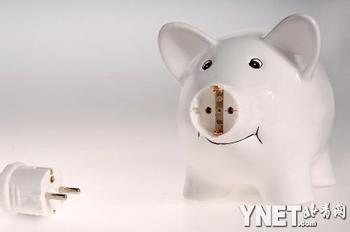Beijing people's low carbon life
2009-12-14 16:19 BJT
Use a traditional clock instead of an electronic one; turn off your computer and monitor during your lunch break and when you get off work; turn off the lights and air conditioning system when you leave a room; unplug your mobile phone as soon as it has finished recharging; air-dry your clothes instead of using an electric dryer; jog in a nearby park for 45 minutes instead of using your treadmill; replace a 60 watt light bulb with an energy-efficient one; use a bicycle instead of your car.
 |
| Beijing people's low carbon life |
Amei, despite the fact she has a cozy apartment and a car, is now living a low-carbon life. A "low-carbon life" means reducing carbon dioxide emissions at every opportunity, it is essentially a lifestyle characterized by low energy, low consumption and low cost. I once asked her: "only one person cannot save the world, why do you want to do that?" She answered by saying: "an energy-efficient light bulb and a solar water heater on their own can contribute very little to conserving energy and reducing emissions, but much energy can be saved and carbon emissions can be reduced notably if 1 tenth of the 1.3 billion Chinese people use them to replace traditional products. According to relevant experts, by 2010, China's electricity consumption will reach 2.7 trillion kilowatt hours, and the electricity consumed by illumination devices will exceed 300 billion kilowatt hours. China can save the electrical equivalent of the annual power generation of the Three Gorges Power Plant by replacing one third of the nation's electric incandescent lamps with energy-efficient LED lamps."
Amei continued:" such a low-carbon life can make us healthier, make the environment more beautiful, and cut our daily spending greatly, thus not only lessening the financial burden upon us, but also relieving pressure on the earth. Why do we not live a low-carbon-life?" Amei added that pop star Madonna was widely condemned recently because environmental experts estimated that her tour would create about 1,635 tons of waste gases, including 95 tons from her private aircraft, 1,080 tons from a passenger plane carrying 250 support people, and 460 tons from cargo transport. "Can you so accurately calculate the carbon dioxide emissions for one person?" I asked.
|
Have your say Take a quiz Related story |
| Beijing girl continues to live "subtraction life" |
Living a low-carbon life demands no shortage of effort to offset the carbon that you yourself emit. It makes you understand what you can do to cut carbon emissions. In everyday life, we can do much to pursue a low-carbon lifestyle: to use rice water to wash your face and hands; use newspaper to absorb moisture and peculiar smells; use facial masks to clean jewelry, furniture and waist belts; and use dried tea leaves to make a pillow.
Your DIY-based work will make you understand that although something might look useless, it is actually useful and it can make your home healthier and fill it with joy. "Low-carbon" lifestyle advocators have demonstrated that climate change is not only a concern of environmentalists, government officials and experts, but also an issue that involves everybody. Today, living a healthy lifestyle has become a trend. Let’s all take immediate action to start living a low-carbon life.
Editor: Shi Taoyang | Source: CCTV.com

 Mail
Mail Share
Share Print
Print



 Video
Video









 2009 China Central Television. All Rights Reserved
2009 China Central Television. All Rights Reserved